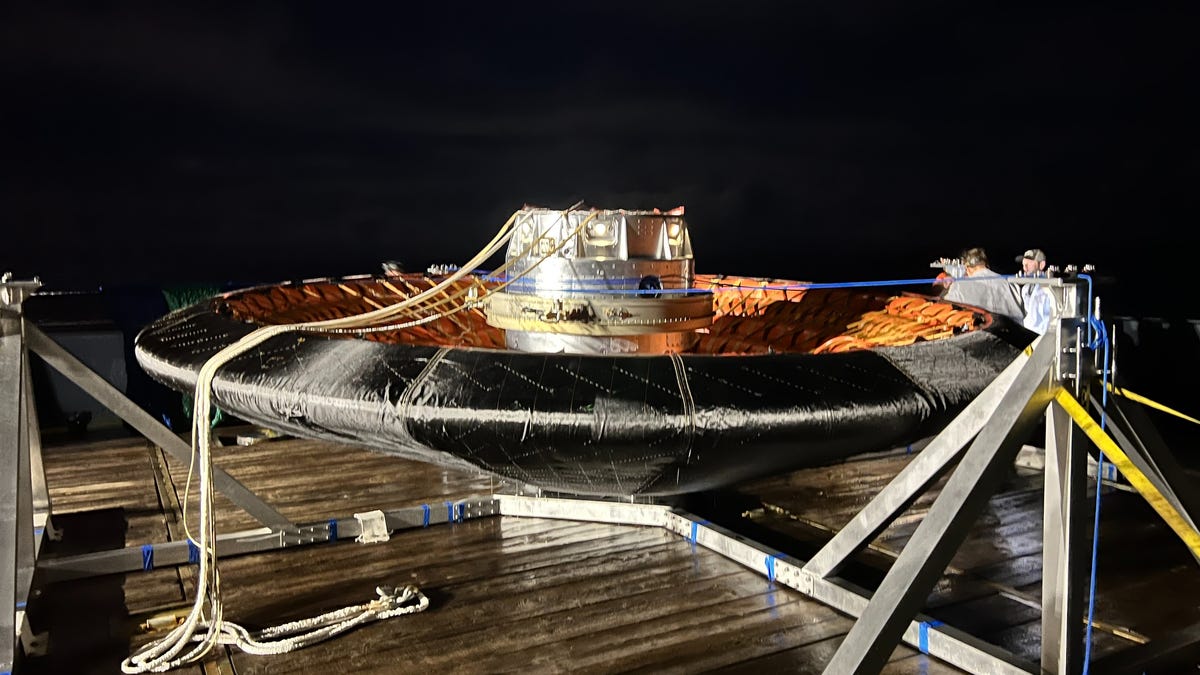NASA Heat Shield That Could Land Humans on Mars Aces Space Test Ride
The Loftid inflatable heat shield took a test ride from low-Earth orbit down to the Pacific Ocean.
NASA's a long way from shipping humans to the surface of Mars, but it's busy preparing for that momentous day. On Thursday, the space agency conducted a successful flight test of a new inflatable heat shield design that could become a key component of a human landing system for the red planet.
Low-Earth Orbit Flight Test of an Inflatable Decelerator (Loftid) is a demonstration of an aeroshell (a kind of heat shield) that can slow and protect a payload (like a rover or astronauts in a spacecraft) as it descends through a planet's atmosphere. To test Loftid here on Earth, NASA sent it to space on board a United Launch Alliance (ULA) Atlas V that took off from California.
The rocket's main mission was to deliver a weather satellite into orbit, but Loftid went along for the ride. It inflated into a flattened cone shape while in space. NASA once described Loftid as "a stack of orange inner tubes covered in a black tarp," but that doesn't do it justice. It uses high-tech materials to withstand conditions in space and the brutal heat of moving through the atmosphere.
It's not easy coming back down to Earth. NASA estimated Loftid would reenter the atmosphere at 18,000 miles per hour (8 kilometers per second). ULA tweeted a clip of the Loftid separation showing it moving away and heading for its descent. It's a spectacular view.
Let's look back at the @NASA_Technology #LOFTID separation from Centaur! pic.twitter.com/KXD3g0HcIG
— ULA (@ulalaunch) November 10, 2022
NASA shared a video of the aeroshell splashing down near Hawaii with a parachute lowering it down to the ocean.
Moments years in the making for the team at @NASA_Langley: See the #LOFTID @NASA_Technology demonstration splash down in the Pacific Ocean near Hawaii. The data from this inflatable heat shield test will help us land more massive missions, and explore farther. pic.twitter.com/PzARsfhC9P
— NASA (@NASA) November 10, 2022
An inflatable heat shield like Loftid could pack down small for long-distance transport across space. Current rigid designs (like the one used for NASA's Perseverance Mars rover) are limited in size based on what can fit in a rocket. The inflatable shield would create more drag as it moves through Mars' atmosphere, a process NASA likens to "a giant brake." This means Loftid could help deliver larger and heavier payloads to the Martian surface.
The recovery crew fished Loftid out of the water. The aeroshell is about 20 feet (6 meters) in diameter. ULA CEO Tory Bruno shared a dramatic video of the recovery operation.
Cool clip of #LOFTID recovery Ops pic.twitter.com/u3my2g0Nd8
— Tory Bruno (@torybruno) November 10, 2022
NASA will get to work on analyzing the heat shield's performance based on sensor and camera data. That information will help evolve future versions of the design. One day, we may see a Loftid-style aeroshell in action someplace other than Earth.


